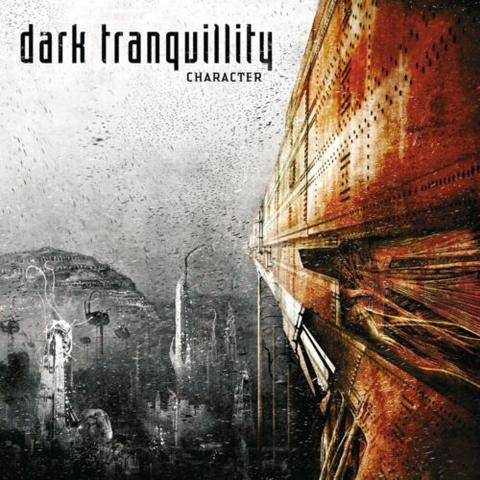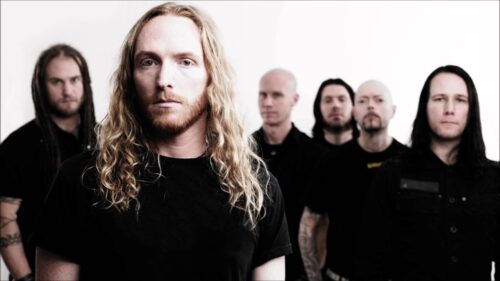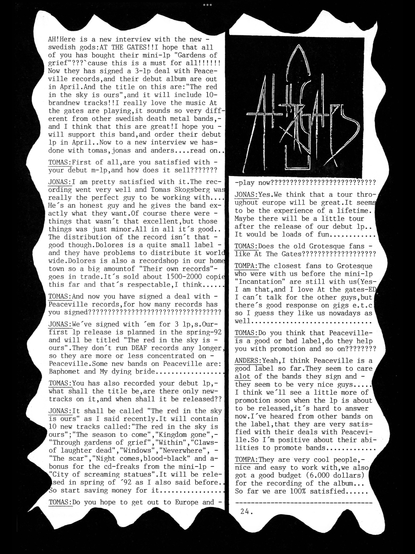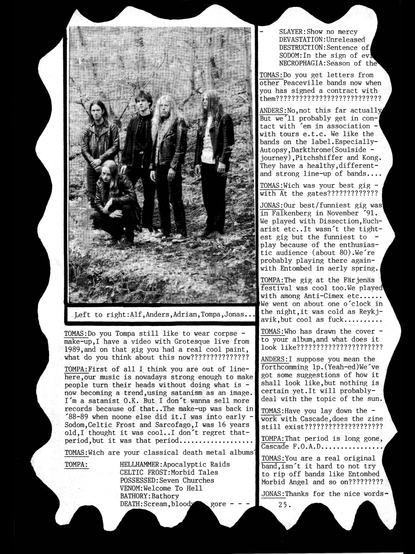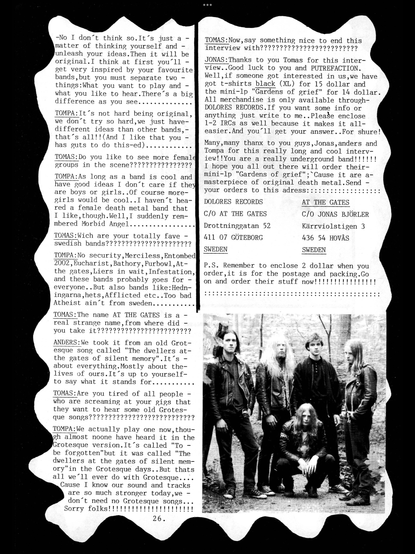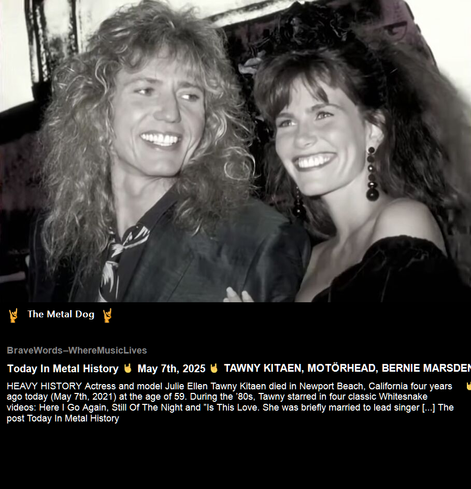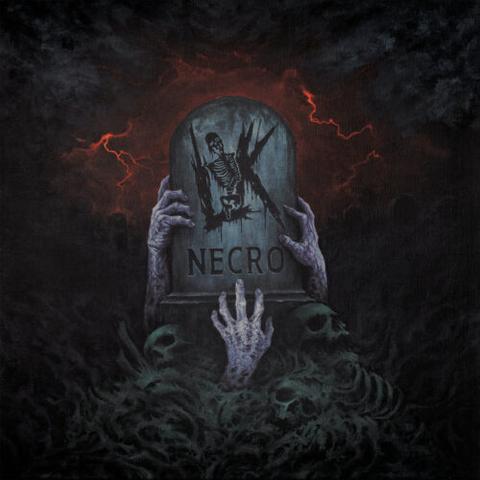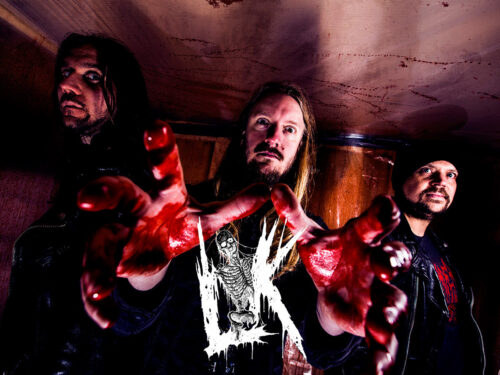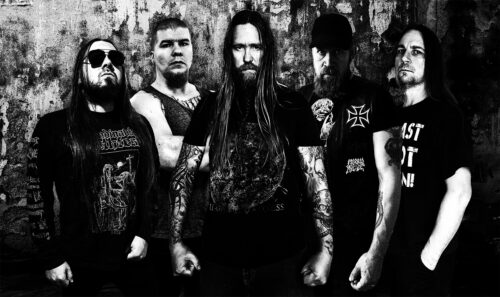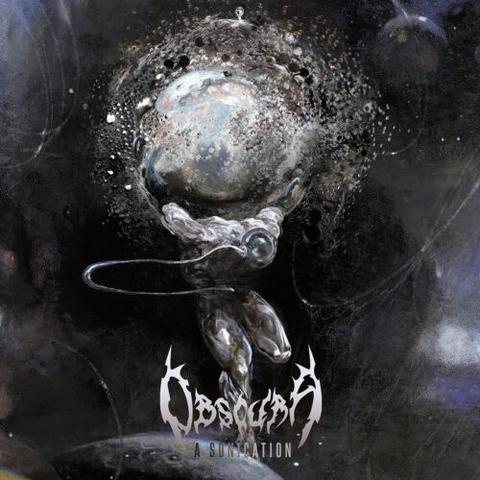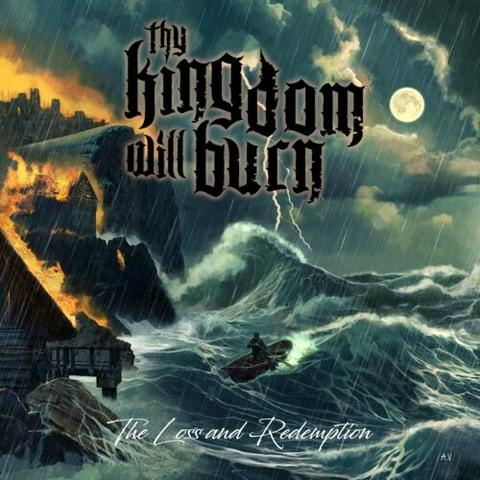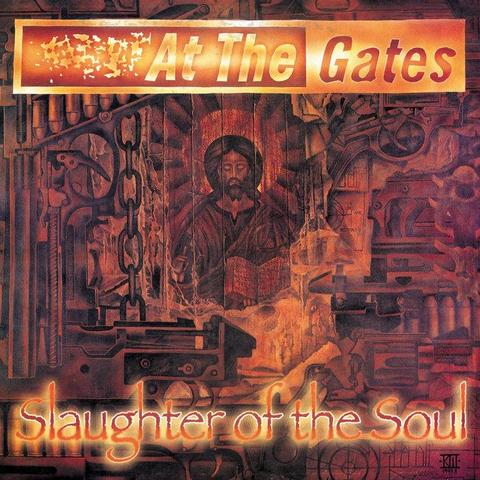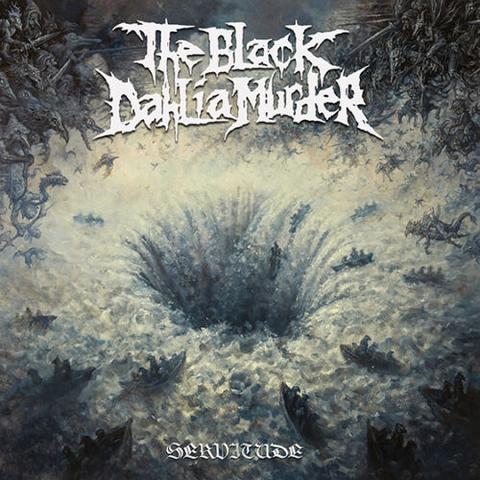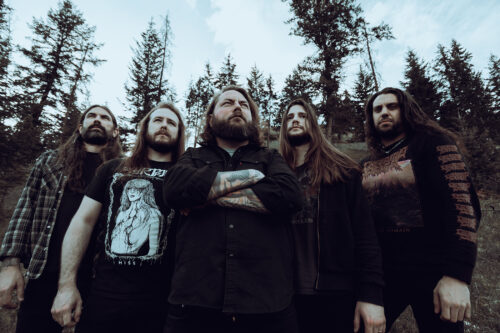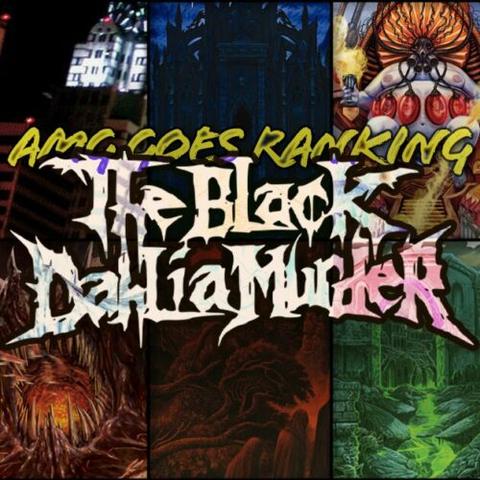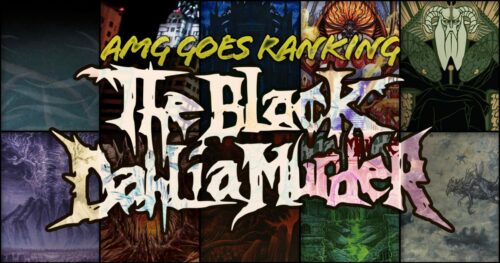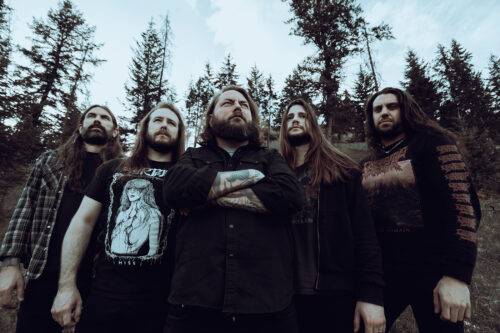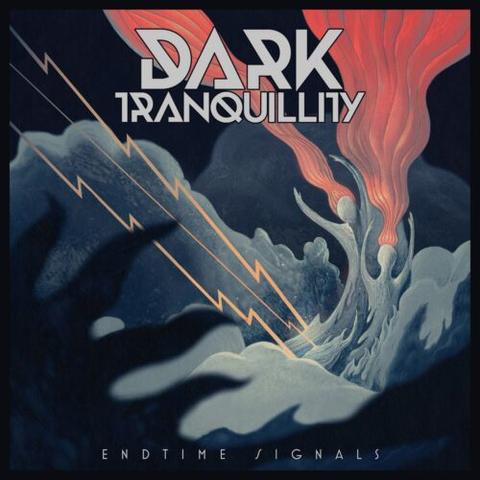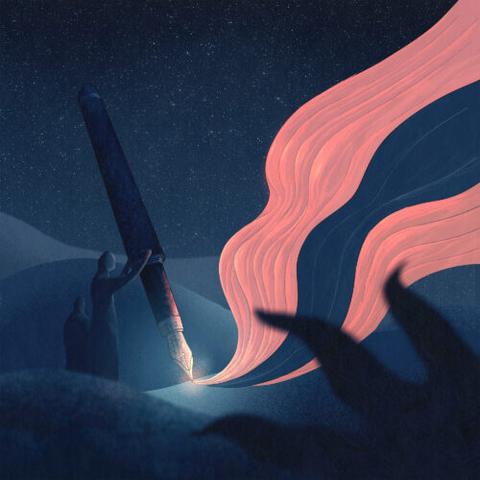Friday night ’At The Gates’ is alright.
#AttheGates
Yer Metal is Olde: Dark Tranquillity – Character
By Grymm
Once heralded as a promising hotbed of melodic death metal goodness, Gothenburg, Sweden wasn’t quite the same back in 2005 as it was in the mid-to-late 1990s. In Flames was busy chasing the nü-metal dream, trading twin guitar melodies and acoustic folklore and beauty for jumpsuits, dreadlocks, and simplistic riffage. At The Gates, once the spearhead of the entire Gothenburg movement, was long gone at that point, and wouldn’t reunite for another couple of years. It was up to Dark Tranquillity to put the city back on the map, and despite their own dalliances in moody goth territory, it would take 2002’s Damage Done to marry their trademark melodic sensibilities with their newfound love for electronic influences and dark motifs. However, with their few prior albums being all over the map, nobody knew what they had in store for them when Character reared its head in January 2005.
Thankfully, Damage Done was a damn riffy, heavier beast. I remember picking up Character at my local Newbury Comics, right up the street from the Staples where I worked during a lunch break on a particularly bad day, and I was blown away by how “The New Build” didn’t mess around at all. With Anders Jivarp blasting away, and both Niklas Sundin and Martin Henriksson hurling riffs and melodies at you at lightning speed, “The New Build” would set the tone straight away that sure, this is like its predecessor, but it was far nastier and uglier. Well, at least from the first couple of songs, anyway.
From “The Endless Feed” on forward, the moodiness that perpetuated 1999’s dark horse Projector would make its reappearance, but rather than dwelling in sorrow and despair, it would instead converge with the band’s refound ferocity, channeling a completely different animal altogether that would later become a Dark Tranquillity trademark. From there, future live classics like “Lost to Apathy” and album closer (and the only “ballad” on here) “My Negation” would further cement Sundin and Henriksson as a guitar duo just as worthy of praise as the classic duos before them. There’s not a bad moment on Character, with each song making a strong case for a live appearance, and the knowledge that no matter what the band chooses for their live set, it’s a surefire bet that anything from Character would go down swimmingly.
And a giant part of that is due to how Character manages to tie up everything that Dark Tranquillity created up to that point into a tidy, neat bow. While it lacked Mikael Stanne’s moody crooning, the intensity of his growls was never in question, and his savage performance acts as a thread throughout the album. Otherwise, the blazing melodies that were captured during Skydancer, fellow YMIO inductee The Gallery, and The Mind’s I were honed to an impeccable sharpness while the moodier vibes from Projector and Haven blended better than before, especially with a much heavier backdrop. This was a culmination of what made Dark Tranquillity great.
And I could say that about any of DT’s mid-period. Damage Done was the about-face return from more gothic wanderings, and Character’s immediate follow-up Fiction would further tinker with the winning formula, with a welcome return of Stanne’s singing voice. But Character… well, Character hit just right, during the right time, and at the right intensity. It was the perfect storm of melodic precision, death metal heft, and electronic experimentation that was the ultimate soundtrack to long work nights, eager drives home, and repeated listens with friends. Character was, and still is, something special, and now it’s rightfully in the Halls of the Olde, where it belongs.
#2005 #AtTheGates #CenturyMediaRecords #Character #DarkTranquillity #InFlames #MelodicDeathMetal #SwedishMetal #YerMetalIsOlde
AT THE GATES (PUTREFACTION FANZINE #6, 1991)
CHECK OUT OUR BLOG FOR MUCH MORE!
https://defendersofoldschoolmetal.blogspot.com/
#TheMetalDogArticleList
#BraveWords–WhereMusicLives
Today In Metal History 🤘 May 18th, 2025 🤘 CHRIS CORNELL, RICK WAKEMAN, BLIND GUARDIAN, WINGER, AT THE GATES
#TodayInMetal #MetalHistory #May18 #2025 #ChrisCornell #RickWakeman #BlindGuardian #Winger #AtTheGates #BraveWords #Metal
Today I tried my hand at homemade fucking bagels, ya’ll. I’ll be damned, they turned out real good! 🥯 Parmesan cheese topped and also everything seasoned. I had some #AtTheGates going in the background for inspiration so I’ll thank Tomas for the help.
#baking #mastodonbaking #bagels #yeastodon #atthegates #noms #deathmetalbaking
#TheMetalDogArticleList
#BraveWords–WhereMusicLives
Today In Metal History 🤘 May 7th, 2025 🤘 TAWNY KITAEN, MOTÖRHEAD, BERNIE MARSDEN, UFO, AT THE GATES, PANTERA
#TawnyKitaen #Motorhead #BernieMarsden #UFO #AtTheGates #Pantera
By El Cuervo
Lik have become a low-key favorite among the old school death metal nerds of Angry Metal Guy. Mass Funeral Evocation is one of stronger debuts from the last decade, while Carnage doubled down on its strengths. While I personally found Misanthrophic Breed less compelling, it had fans among other writers. And besides two albums of great (and one album of average) death metal, Lik have also gifted me one of the coolest experiences of my life: the immortal Mikael Stanne fist-bumping me as I donned one of their shirts at 70000 Tons of Metal. It was therefore with high expectations that I embarked on this review.
At its core, Necro remains an old school death metal album. The spectres of Entombed and Dismember loom heavily over Lik; such is the lot of all Swedish metalheads indulging in a spot of the necrophiliac arts. But recent years have also found the troupe eagerly devouring the corpse of In Flames, if buried in their 90s heyday. “War Praise” opens with a machine-gunning lead you might expect from an early 90s death metal record, but this swiftly gives way to a shredding lick that caps the song’s introduction and acts as an instrumental quasi-chorus. The shredding guitar tone skips over the harshness of At the Gates and bee-lines straight for the relative clarity of their more melodic comparators. It’s just a brief taster of a melodic sound that will recur later on the album. Make no mistake; this is still death metal of the blood-spattered variety. But the melodic punch belies a group casting their deathly gaze away from their Stockholm roots towards Gothenburg on the other side of the country.
As if to assuage any trepidation of existing fans concerned about “melody” or “hooks” (forgetting, of course, that Lik have always favored hooks, even if heavy ones), the vast majority of the ten tracks here prioritize the fusion of bludgeoning rhythms and scything melodies that is unique to Swedish death metal. Though Necro may have a melodic knack, the savage bite of its guitars always comes first. “Worms Inside” features a particularly fast and brutal opening, leading with a riff that bulges like a vein on the verge of explosion. And “Shred into Pieces” almost has the speed and relentlessness of grindcore. The energetic vocalist barks through ridiculous lyrics that are as violent as they are depraved, while the drums sound more powerful than ever as they’re presented more prominently in the mix than previously. Lik manifest a never-ending pursuit of exciting, energetic music, and their morgue-defiling enthusiasm is infectious.
Besides the judicious injection of melody through cleaner guitar tones and/or harmonizing guitars, Necro further demonstrates a song-writing hand that’s beginning to develop from pure, old school death metal. “Morgue Rat” opens with a purring bass and techy leads, but later orients around the rhythmic, expressive vocals, its lyrics dripping with blood and semen. While they begin in guttural territory, the back half progresses to a blacker, witchy shriek. Likewise, an unexpected mid-song interlude lends an air of intrigue and re-energizes the song for its finale. “In Ruins” is the most expansive track here; it deliberately shuffles a slower, doomy introduction, frenzied solos, pulsating rhythms, and harmonized shouts into a song that feels more than the sum of these parts. This and “Rotten Inferno” feel more thoughtful and varied as they frequently switch gears and escape the trappings of a verse/chorus structure.
Necro is a fundamentally sound album. It does what all good old school death metal albums do by focusing on razor-sharp leads, lo-fi production,n and energetic song-writing. It’s impossible to be a fan of death metal and not enjoy Lik. So why no better than a 3.5? I still feel that the sharpest edges in the Lik discography are in the past; Necro just isn’t as joyous or memorable as Mass Funeral Evocation or Carnage. Although it strives to expand the core sounds it uses, it isn’t so good as to escape the trappings of a sound that’s already been heard many times over. I didn’t necessarily expect more, but I had hoped the newfound development might push the band a little further.
Rating: 3.5/5.0
DR: 7 | Format Reviewed: 256 kbps MP3
Label: Metal Blade Records
Websites: likofficial.bandcamp.com | facebook.com/lik
Releases Worldwide: April 18th, 2025
#2025 #35 #Apr25 #AtTheGates #DeathMetal #Dismember #Entombed #InFlames #LIK #Necro #Review #Reviews #SwedishMetal
Wombbath – Beyond the Abyss Review
By Alekhines Gun
Swedish death is metal for crackheads; a tired, well trodden sound, with fanatics and devout followers always finding room for “just one more” illustration of the genre. It’s almost impossible to find a review of any modern album that doesn’t inevitably cite Dismember and Entombed as touchstones and reference points, crafting the illusion that there’s nothing left to offer from such established and boundary-setting aural paintings. Fortunately, a few bands carry the Swedeath torch with pride, and chief amongst them is Wombbath. Certified OG’s of the 90s heyday, they’ve had a major renaissance after reuniting back in 2013, set apart by genre experimentation and straight excellence of songcraft. Our beloved Holdeneye has sung their praises on several occasions, but with his attention focused elsewhere, I’ve leapt at the chance to get that mani-pedi that only the Swedes know how to provide. I hope you brought shampoo…
As is Swedeath tradition, the first thing to expect is the generally expected. The guitar tones still buzz with a familiarity like a warm blanket, HM-2 tones carrying out riffy assaults that seem pulled straight from the 90s while feeling refreshingly modern and immediate. Tracks like “Beyond the Abyss” and “Symphony of Dread” flow from Vomitory-infused bounce to the most melodic of At the Gates pomp, with theatricality and violence walking hand in hand. Wombbath exceed at stylistic song craft, slicing and dicing their way from chorus to solo to city leveling chug in equal measure where the aural excess never dominates the excellence of composition. A great track order allows Beyond the Abyss to carry the listener on an aural journey, from the pit ripper of an opening to the doom-laced plodding closer with ebbs and flows of speed, weight, and engagement without ever allowing fatigue or boredom to set in.
While familiarity is part and parcel with the subgenre, Wombbath continue to paint with the most vibrant of colors. Many songs come with violin flourishes and interludes, provided by guitarist Thomas von Wachenfeldt. While not quite going the way of Ne Obliviscaris, such flourishes permeate the album, letting the doomy flow of “Consumed by Fire” or the atmospheric laden “Deep Hunger” shine with sparkle and personality. Beyond the Abyss isn’t content to merely cause heads to bang off torsos or trigger air guitar-related arthritis, though both symptoms are to be found in ample measure. Bells, synths, choirs, a smattering of clean vocals, all frosting and sprinkles on a very deathly cupcake manage to set this release apart with its own character and flavor beyond being “merely” more Swedish death, and all without a dose of gimmickries or inauthentic utilization to be found.
The only downside to such a uniformly well-composed album is the peculiar lack of lethality in tone. Wombbath trade stock in the required chainsaw guitars, but these chords rev with that of an electric-powered rather than gasoline fueled machine. This causes otherwise excellent moments to pass by with less than their deserved impact, with moments like “Faces of Tragedy” – sporting a stank face inducing chuggathon worthy of modern Cannibal Corpse – suffering the most. Swedeath this aggressive and artistic is a rare treat, and when I find it, I want my speakers to tremble in terror. Instead, the tone sounds more akin to the most recent Frozen Soul, where excellent riffs give way to a more gentle presentation when a dose of bloodthirst is warranted. Fortunately, this complaint is abetted as the album progresses, but it still feels like a lost opportunity to give such fantastic riffs the last push they need to make a modern-day classic.
Wombbath continue their streak of excellence in execution with nary a clinker or dud to be found. Feral might be more violent and Lik more immediate and Grave more atmospheric, but Beyond the Abyss stands ready to remind any and all that, in the words of our Angry Overlord, at the end of the day death metal still rules the roost. Trimming down the album length to a reasonable runtime1 and keeping the tonal palate refreshed and vibrant with instrumental diversity has paid major dividends, cementing the band as modern-day forerunners of a founding father genre. If you’re still counting down the years till the hopeful and hypothetical new Dismember album, or if your affections for the genre have run stale in a world filled with Entombed clones, Wombbath are here to remind the world that the genre is still filled with vibrancy and potential. Hop on in! The womb water’s fine…..
Rating: 3.5/5
DR: 8 | Format Reviewed: 320 kbps mp3
Label: Pulverized Records
Websites: pulverised.bandcamp.com/album/beyond-the-abyss | facebook.com/wombbathofficial
Releases Worldwide: March 14th, 2025
#2025 #35 #AtTheGates #BeyondTheAbyss #CannibalCorpse #DeathMetal #Dismember #Entombed #Feral #FrozenSoul #Grave #LIK #Mar25 #NeObliviscaris #PulverizedRecords #Review #Reviews #SwedishDeathMetal #Vomitory #Wombbath
By Dolphin Whisperer
As an institution of modern death metal, Obscura albums arrive to eager metalheads with anticipation, accolades, and, well, a little controversy.1 The German workhorse Steffan Kummerer (Thulcandra) and his assembled (and frequently flushed) roster of seasoned and sensational performers continue to deliver bombastic material while deviating down paths of structural simplification. Though the path of increasing hippitude often appeals to aging, progressive musical minds—think the Cynics and Devin Townsends of this world—Obscura has emerged from a snaking and deeply-arranged past into a nature barbed with Björriffed hooks and piercing, melodic peaks. Of course, a path, however traveled it may be, can always reveal a new wrinkle in weathered hands.
A Sonication functions as a step further into the synthesis of melodeath’s formative sounds with the steadfast Obscura amalgam. Kummerer has framed Obscura throughout each iteration as an exploration of his love for death metal, leaning on the percussiveness of Cynic-indebted guitar lines for rhythmic propulsion or the heft of a Morbid Angel syncopated, violent groove to shatter the typically bright, techy flow.2 And as the earlier, longer-form progressive leanings swelled and passed, Obscura extracted from punchier sources a scrappier stance and lower-sweep attitude. That’s not to say that neither Kummerer nor new hire Kevin Olasz (Crone, God Enslavement) ignore their virtuosity entirely, letting vibrant and buttery leads and solos guide the path of spacious riffs on several occasions. But A Sonication’s compositions sway through scales with a tight tether to the growing sadness in Kummerer’s shrieky and modulated cries.
Seven albums in, Obscura doesn’t aim to surprise so much as they aim to wear their strengths well. Through thundering tom booms and frayed guitar cuts that veteran producer Fredrik Nordström helps boost and divide for bubbling bass delicacies, A Sonication achieves a scratchy yet clear sonic identity that grants it a defined stance amongst its preceding incarnations. Raging opener “Silver Linings” and spiritual follow-up “In Solitude” capture the same At the Gates on bass-loaded poppers melotech swirl that helped 2021’s A Valediction find a power-swagger in resuscitated Gothenburg licks. And in a syncopated heroic riff pattern that recurs that peppers itself from open to close—a pattern that too litters the Obscura discog, from “Noospheres” (Cosmogenesis, 2009) to “Akróasis” (Akróasis, 2015) to “Emergent Evolution” (Diluvium, 2018)—A Sonication finds a familiar and invigorating harmonic grounding for the pummeling rhythms and throat-mangling rasps that surround.
However, A Sonication loses steam at the hands of piecework pacing amongst its self-referential hooks. Obscura has chosen this release to be their shortest to date, often a signal for experience-dialed intrigue and charm. But in paradox, cuts like “Evenfall” kill the early ripping mood with a sadboi-coded, anthemic lurch, despite Obscura still trying to navigate up front with quick-sticking riffs. Easy enjoyment finds a further sputter both in bursts of speed that feel like part of a different album (“The Prolonging”) and a reprisal instrumental track (“Beyond the Seventh Sun”), the latter of which, in its high-tech nature, has been an Obscura staple (“Orbital Elements” of Cosmogenesis and “Orbital Elements II” of A Valediction being the direct pedigree). Both that whiplash Necrophagist intensity followed by an in-the-lines obligation fill space in a way that doesn’t service the dark, harmony-seeking themes of the album—detours for the sake of fulfilling traditional aggression and wankery. In contrast, “Stardust” unpacking the finishing trio, no matter how many times we’ve heard a variation on that main riff,3 delivers on the melodic melancholy that gives A Sonication its grayscale character.
As the enmelodeathification of Obscura continues through A Sonication, Kummerer has found a comfort in a focused and polished expression that pleases with little effort, even if it lacks novel and awe-inspiring moments. In that same way, Obscura’s trajectory mirrors the patterns of crystallization that have occurred in the melosphere at large, with a streamlining of attack that errs close to a sanding of its unique aspects. Obscura retains a core of digestible and attachable showmanship carried by death-loving riffage, which makes its missteps quizzical in its supposed three-year construction. But A Sonication succeeds enough anyway—not with the blossoming strength of wisdom but with a persistence too practiced to craft a bad product.
Rating: Good.
DR: 8 | Format Reviewed: V0 mp3
Label: Nuclear Blast Records
Websites: realmofobscura.com | obscura.bandcamp.com
Releases Worldwide: February 7th, 2025
#2025 #30 #ASonication #AtTheGates #Cynic #DeathMetal #Feb25 #GermanMetal #MelodicDeathMetal #MorbidAngel #NuclearBlastRecords #Obscura #Review #Reviews #TechnicalDeathMetal
Playing ‘The Nightmare of Being’ by At The Gates.
Cat is sitting next to me, farting occasionally, illustrating in his own way… the nightmare of being.
Thy Kingdom Will Burn – The Loss and Redemption Review
By Dr. A.N. Grier
Scarlet Records have been around for some time, quietly snatching up every power, symphonic, and corset-core outfit in Italy. Why are there so many of these acts in a country of its size, you ask? I-a have-a no idea-a. So, it was a great surprise when I picked up this rando from their label, neither Italian nor any of the aforementioned genre abominations. Thy Kingdom Will Burn hails from the frozen wastelands of Finland and plays sad-boi melodic death metal. Like neighboring melodeath elite, Thy Kingdom Will Burn sports the genre standards of bands like Insomnium and Dark Tranquillity while tapping the vein of old-school At the Gates. Don’t expect any new directions or genre-shaping songwriting decisions, but they’re solid at what they do. Having only released LPs since 2021, it’s surprising (and maybe a little scary?) that The Loss and Redemption is the band’s third album. Regardless, this little prolific band is here to shed tears, shred balls, and possibly recruit a new fan.
One thing that can be said about Thy Kingdom Will Burn is that they are an acquired taste. Not in a negative way because there are plenty of bands like that. But, many of the transitions between gruffs and cleans can be jarring at times, though the diversity is pleasing with the different flavors of cleans. If you dislike the forced gruffs of Trivium’s Matt Heafy, you’ll have some difficulty here. They aren’t identical but it’s pretty damn close. That said, they’re good at writing passionate, melodic pieces. The band continues to find their voice and The Loss and Redemption is their best record yet. So, get the tissues ready, stretch that neck out, and prepare for things you’ve heard before that still might have you wrinkling your brow.
“Perpetual Void” is a strong song from the band and a great way to kick off the album. It incorporates many of the individual techniques you’ll hear throughout the album but into a single song. Opening with a melodic introduction, it settles into a groove before those previously mentioned snarls hit the ears. As the track rises and falls, building the atmosphere, we find a gentle, bass-led passage that precedes the erupting, memorable chorus. In six minutes, you’ll traverse passionate sections, happy-go-lucky interludes, and a stargazing chorus that grows stronger as it goes. “Sydänyö” bookends the album by taking elements from the opener and emptying the pantry. While the song swirls in and out of melodic passages, using clean guitars to set the mood, it also includes one of the band’s heaviest riffs. Toss in some folkiness, orchestration, and piano to offset the concrete-cracking drive of the song, and your heart will ache as much as your head will bang.
By the time you get to the closer, you’re used to the folky elements of The Loss and Redemption. But, I was not prepared for the extent of it in “Obscure Existence.” It’s great, and I love it. But coming off “Perpetual Void,” I did not expect the folkery and upbeat gallop that eventually transitions into some Dark Tranquillity territories. This song is also the first introduction to the album’s piano usage, which is quite pleasing to the ears. These surprises kept me inspired enough to spin the album again. However, some surprises do not work. Case in point, “Forever in Dark.” This gorgeous song didn’t deserve the spoken-word segments that derail the beautiful flow and heart-wrenching chorus. That said, the build and final iteration of the chorus is worth it—even if I cringe with each spoken-word interlude that corrupts its beauty.
There are plenty of other highlight moments in The Loss and Redemption, but not everything works in the confined structure of a song. “Martyrs of Killing Floor”1 has a lot of promise, but with all its mood shifts and bizarre lyrics, I’m left waiting for it to end. “Suffering Sky” has its moments but drags on too long and the chorus is boring. Dropping this track would have helped the flow and omitted almost six minutes of the album’s nearly fifty-minute runtime. All in all, The Loss and Redemption sees Thy Kingdom Will Burn continuing to grow as a band. The songwriting is their strongest, but most sinks only hold so many dishes.2 If the band can reel in some of the chaotic qualities of their song structures, Thy Kingdom Will Burn could be a strong contributor to the melodeath world. While Scarlet Records needs to send me some 320 kbps promos, the dynamics of this record are lush, letting you hear nearly every instrument and the individual orchestral elements. If you like melodeath, you might find something worthwhile in The Loss and Redemption.
Rating: 3.0/5.0
DR: 8 | Format Reviewed: 256 kb/s mp3
Label: Scarlet Records
Websites: thykingdomwillburn.bandcamp.com | facebook.com/thykingdomwillburn
Releases Worldwide: January 17th, 2025
#2025 #30 #AtTheGates #DarkTranquillity #FinnishMetal #Insomnium #Jan25 #MelodicDeathMetal #Review #Reviews #ScarletRecords #TheLossAndRedemption #ThyKingdomWillBurn
I’m ‘At War With Reality’.
In a stoke of luck, the band At The Gates made a similarly titled album for me to listen to.
Album of the Day: AT THE GATES - Slaughter of the Soul. A classic. #metal #deathmetal #atthegates 🎧: https://atthegates.bandcamp.com/album/slaughter-of-the-soul
Música: "At War with Reality"
Banda: At the Gates
País: Suécia
The Crown – Crown of Thorns Review
By Carcharodon
The Crown is a metal institution. These Swedes have been pumping out furious death-infused thrash for over 25 years, with no real missteps. Indeed, we at AMG Industries have been tongue-bathing them since, Doomsday King, their 2010 comeback following a six-year hiatus, on which a younger, looser Steel Druhm splurged a (rather generous) 4.5. The slightly more divisive Death Is Not Dead (2015) saw original vocalist Johan Lindstrand return and garnered a gushing 4.0, as did 2018’s Cobra Speed Venom (although I can’t blame Steel for either of those). Indeed, it wasn’t until 2021’s Royal Destroyer that a dose of that famed AMG restraint was introduced, with a ‘mere’ 3.0 awarded. This rash of high scores—from three different reviewers—goes some way to showing both the consistency of The Crown’s output and the regard in which they are held. Back with their 12th full-length, Crown of Thorns, I’m the fourth reviewer here to tackle output from The Crown. I do hope that doesn’t bode ill for that poor, savaged score safety counter.
If anyone was afraid that, a quarter of a century into their career, The Crown would suddenly have a ‘moment’ (like The Haunted did on Unseen, for example), you can relax. Well, not relax exactly, but stop worrying. Crown of Thorns rips into furious, pummelling life right out the gates on “I Hunt with the Devil.” A lot of Crown of Thorns hearkens back to Cobra Speed Venom or even Doomsday King, leaning into At the Gates (“God-King”) and even Dark Tranquility (“Martyrian”). The Amon Amarth vibes, which were strong on Royal Destroyer, are dialed back, as are the longer songs, with only two clearing the five-minute mark (one of those a bonus track).
Indeed, much of Crown of Thorns has a frantic energy to it. The raging “The Agitator” rips through its sub-two-minute run with such urgency that The Crown risks getting a speed metal tag. And, where those Amon Amarth influences remain, they are very well executed (“Churchburner”), with Lindstrand’s trademark snarling bark ensuring The Crown still sounds like … well, The Crown. Where things get a bit weird, is when the tempo comes down. Dynamics are no bad thing, of course, they give the breakneck sections more impact. However, it’s almost like the band felt that dropping the pace left some unused space they needed to find a way to fill. Their solution? Add a load of effects, echoes, and reverb onto the vocals, sometimes introducing a half-whispered delivery (“Gone to Hell” and parts of “The Night Is Now”).
In many ways, The Crown delivers exactly what you expect and want on Crown of Thorns. Churning, expertly crafted, thrashy melodeath riffs. Delivered by Marcus Sunesson and Marco Tervonen, the guitarists traffic in that unmistakably Swedish style, with a sharp, almost blackened edge to the guitar tone to give just a little extra bite. However, it’s a shame that two of the strongest songs (“Eternally Infernal” and “No Fuel for God”) were relegated to bonus tracks. By contrast, a few of the writing choices made on the album proper were slightly more questionable. The opening, bass-led groove of “Gone to Hell” could easily have come off a Warrior Soul record and, even when it kicks up a bit, it lacks bite. The same charge could be laid at the door of “The Night Is Now” and “Where Nightmares Belong.” The production is also rougher than I’d like. There is something slightly off with the top end of the guitars, which occasionally have a waspish buzz (most notable on “Howling at the Warfield”),1 while the drums often seem to get swallowed.
If you’re a fan of The Crown, there’s enough here to enjoy and remind you of what you love about them. Yet, in their heavier sound, the melodicism has been sacrificed for all-out speed, while in the slower material, they’ve resorted to unnecessary bells and whistles that give Crown of Thorns a slightly artificial feel. At its best (“I Hunt with the Devil” and “Churchburner”), Crown of Thorns is straight-up fun. But highlights aside, Crown of Thorns just feels a touch tired and The Crown feels like a band searching around for new inspiration. If you’re new to The Crown, this isn’t the place to start.
Rating: 2.5/5.0
DR: 6 | Format Reviewed: 320 kb/s CBR MP3
Label: Metal Blade Records
Websites: thecrownofficial.bandcamp.com | facebook.com/thecrownofficial
Releases Worldwide: October 11th, 2024
#25 #2024 #AmonAmarth #AtTheGates #CrownOfThorns #DarkTranquility #DeathMetal #MelodicDeathMetal #MetalBlade #Oct24 #Review #Reviews #SpeedMetal #SwedishMetal #TheCrown #TheHaunted #ThrashMetal #WarriorSoul
The Black Dahlia Murder – Servitude Review
By Angry Metal Guy
The Black Dahlia Murder lost a giant on May 11th, 2022, with the death of co-founding member Trevor Strnad, who had penned the lyrics and fronted TBDM across its nine-record discography. The question of how you replace someone as well-loved and well-respected as Trevor must have been a matter of some discussion internally. The solution from the veteran melodeath outfit was to keep the job in-house. Rather than bringing in a new face, guitarist and co-founder Brian Eschbach picked up the microphone, while he was replaced by Ryan Knight—who previously slung the six-string from 2009’s Deflorate to 2015’s Abysmal. Even though I appreciated this solution, it was still difficult to press play on 2024’s tenth The Black Dahlia Murder LP, Servitude. It felt strange to know that our affable, bearded, and dad-bodded metal nerd was no longer going to be screaming at me about lycanthropy. I wondered whether I could enjoy a Strnadless TBDM record or if it would change their sound irrevocably.
You know how The Black Dahlia Murder sounds. Giving strong Gothenburgian vibes, Servitude still deals in the bounce of the Björriff (like “Panic Hysteria” or “Asserting Dominion”), but with the post-Ritual light chaos and groove that helped to transform and mature their sound (“Evening Ephemeral,” “Mammoth’s Hand”). The guitars anchor Servitude’s sound, held firm by sick riffs at breakneck speed, accented with unexpected melodies (“Servitude”), stadium solos (“Mammoth’s Hand”), Gorodian gymnastic harmonies on an Obscura vault track (“Transcosmic Blueprint”) and even 29 seconds of Opeth (“An Intermission”). While Ryan Knight and Brandon Ellis give a master class in metal guitars from neoclassical to thrash, the rhythm section of bassist Max Lavelle and drummer Alan Cassidy1 rumble and blast, driving the sound forward with an intensity that stems from Florida rather than Sweden.
Over the flurry of guitar gymnastics and blast beats, Eschbach’s growls and screams pace a familiar path. At first, my brain didn’t want to accept what it was hearing. When listened to actively, however, I recognized the lower screams and throatier gutturals. And then suddenly, Eschbach was just the vocalist; barking lightning (“Panic Hysteric,” “Evening Ephemeral”), working both his slightly condensed upper and lower ranges in the trademark style of which Trevor was master. While familiar, Eschbach’s approach to rhythm feels like a guitarist doing vocals. He works in lockstep with the groove being carried by the band to create staccato punctuations (“Transcosmic Blueprint”) and syncopated swings (“Asserting Dominion”) that make his performance stand out.2 While Trevor was freer with rhythm and expression, Eschbach’s performance is percussive and precise. The weakness in his performance can be found in the guttural vocals, which don’t reach as deeply or hit as hard. But when all is said and done, Eschbach’s performance sounds like The Black Dahlia Murder.
Servitude seems like an album written to succeed or fail based on the execution of a well-established sound. The devil is, therefore, in the details: the songwriting, the riffs, and especially the guitar solos. And in those places, The Black Dahlia Murder isn’t taking risks. The writing isn’t suddenly progressive, “Aftermath” starts in 7, but they revert to 4/4 and never change time signatures again for the rest of the album.3 There is no revitalization of Ritual‘s or Everblack‘s adventurous arrangements. Where the songs surprise is when they sound chaotic, giving Carnosus (who gives TBDM) or euro-tech and straying further from the Björriffs that propelled them to prominence (see “Evening Ephemeral,” “Utopia Black” or “Mammoth’s Hand”). And Knight and Ellis drop killer solos. “Cursed Creator” hits with shred and harmony, “Transcosmic Blueprint” gives jazz fusion, while “Evening Ephemeral” starts Servitude off on the guitar heroics that made Ryan Knight one of my favorite guitarists ever. Oddly, though, there are a couple of duds as well (“Asserting Domination” is bland, while “Servitude” is fine).
The core of The Black Dahlia Murder hasn’t changed, so the core of Servitude was going to be good. At 35 minutes of riffy, guitar-driven melodic death metal, it’s easy to surmise that The Black Dahlia Murder couldn’t fail on Servitude. And yet, there is a risk inherent to releasing a record following the tragic passing of one of the scene’s most beloved personalities. In a way, you could criticize Servitude for playing it too safe. It hits all the notes you expect it to hit with its Industry Standard Mastering Job™. The Brandon Ellis and Mark Lewis production is functionally indistinguishable from previous albums. And there’s a familiar-but-not-quite feel to certain riffs or melodies. Yet, as a whole, Servitude succeeds at both being very good—hitting extra hard on those last three tracks—and feeling like an honorable way to continue the legacy of one of melodic death metal’s premiere acts.
Rating: Very Good!
DR: 7 | Format Reviewed: 320 kb/s mp3s
Label: Metal Blade Records
Websites: Bandcamp | Facebook
Releases Worldwide: September 27th, 2024
#2024 #35 #Abysmal #AtTheGates #Carnosus #DeathMetal #Deflorate #Everblack #Gorod #Melodeath #MelodicDeathMetal #MetalBladeRecords #Obscura #Opeth #Review #Reviews #Ritual #RyanKnight #Sep24 #Servitude #Slugdge #TheBlackDahliaMurder #TrevorStrnad
AMG Goes Ranking – The Black Dahlia Murder
By Dolphin Whisperer
The life of the unpaid, overworked metal reviewer is not an easy one. The reviewing collective at AMG lurches from one new release to the next, errors and n00bs strewn in our wake. But what if, once in a while, the collective paused to take stock and consider the discography of those bands that shaped many a taste? What if multiple aspects of the AMG collective personality shared with the slavering masses their personal rankings of that discography, and what if the rest of the personality used a Google sheet nay, a Google FORM some kind of dark magic to produce an official guide to, and an all-around definitive aggregated ranking of, that band’s entire discography? Well, if that happened, we imagine it would look something like this…
The Black Dahlia Murder is a band I’ve had the honor of watching develop throughout its entire career. With its debut in 2003, an album that I think stands up much better than the chuckleheads below, the Michigan melodic death metal act has been with me for twenty years. I saw them opening for bands before anyone knew who they were, and I was buying each new release on release day. In 2024, The Black Dahlia Murder faces new challenges, moving on from the tragic loss of vocalist and scene giant Trevor Strnad and they will release Servitude on the 27th of September (that’s tomorrow, yes). So, before I unleash my Very Important Opinions™ on the world about the new full-length LP, we thought that a romp through the band’s discography seemed in order. Note that anyone who tells you that Ritual isn’t their best album is lying to you. – Angry Metal Guy
The Ranking(s)
Dr. Wvrm
#9. Unhallowed (2002). At first glance, you would be forgiven for thinking Unhallowed is by a completely different band. This album is three kids standing on each other’s shoulders and wearing a trench coat next to the other records in this catalog. But despite how far TBDM still has to go from this point, Unhallowed has its positives. Its take on 90s Gothenburg is interesting, if not always good, and it certainly doesn’t lack energy. “Elder Misanthropy” is the first entry into the pantheon of all-time TBDM jams, even if it’s a messy one. It’s a long way up from here for the boys from Michigan, but you can clearly see the seeds of what’s to come in this debut.
#8. Verminous (2020). That Verminous is the low point of modern TBDM despite being pretty good says quite a lot about the level of output this band has maintained for the last 20 years. The album maintains the reflexive phase started by Abysmal (more on that in a bit), feeling more like a down-and-dirty expansion of their ideas on Everblack at times. The execution, however, falls further down than I’d like. For a band with bangers aplenty, Verminous never finds its bonafide hit and feels stuck in first gear.
#7. Abysmal (2015). Don’t get me wrong—Abysmal features some of the strongest fretwork in TBDM’s catalog (with Ryan Knight still on board at this point, who is surprised by this?). But coming at the tail of an incredible four-album run, Abysmal’s return to hyperkinetic hooks and solos begins a third phase in the band’s catalog. Instead of pushing onward and outward from the progressive attitude of Everblack, TBDM refocuses and uses the lessons learned throughout their years of experimentation to revitalize their core sound. As a result, Abysmal feels more like a transition record between eras than anything else. In theory, it’s not doing too much differently from Deflorate, and unfortunately feels a bit stale by comparison. TBDM would find a way around the all-been-done-before feel by their next album, but with Abysmal, the retread weighs a bit heavier than you’d like.
#6. Miasma (2005). Miasma demonstrates instant growth over TBDM’s debut. If Unhallowed was a rough attempt at mid-90s melodeath, Miasma surges forward to the turn-of-the-century fusion of melodic death metal and mainstream metalcore production.1 Though they wouldn’t stick with this sound for long, there’s so much across Miasma to like, from the cleaner production and maturing songwriting to the charisma that is now starting to bleed through every facet of the music. Strnad’s famous dual vocals really come into their own here, and the rest of the performances aren’t far behind. Though there’s still one piece of the puzzle remaining, you can see the full picture starting to resolve.
#5. Deflorate (2009). This album proved not only that TBDM wasn’t a one-album wonder, but that they also weren’t a one-trick pony. Ryan Knight joined the band from Arsis and overnight launched TBDM’s lead guitar capabilities into the stratosphere. But what looked like Nocturnal on nitro on its face sees, under the hood, Brian Eschbach’s songwriting quietly started to push the boundaries of the band’s imagination and capacity. Closer “I Will Return” veers hard left from everything to that point, touching on patient development and melodic progressions in a way that we could have only guessed TBDM was capable of (“Warborn”). It may lack the highs of some other records, but Deflorate is where TBDM started to show the depths of their abilities.
#4. Everblack (2013). Those of you who know I love TBDM know why I love TBDM,2 and what I want isn’t in steady supply on Everblack. What is, however, is perhaps the pinnacle of TBDM’s exploratory songwriting and certainly the heights of Knight’s solo abilities (“Into the Everblack”). Everblack is a grower in a catalog of showers, operating in many ways like a prog death album in its attention to detail and willingness to fiddle with genre conventions. It’s also Strnad at his most diverse, leading an excellent full-ensemble performance from melodeath to straight death to black metal and back again. My personal predilection for beeg boi melojams is the only reason this isn’t placing higher on this list; on an objective quality scale, Everblack is aces.
#3. Ritual (2011). Now we’re talking. Everything up to this point had something holding it back for me, be it concept, style, or execution. Ritual is the first record on this list where any quibbles I have are so minor as to be unmentionable. Delivering on the promise of “I Will Return,” Ritual ain’t afraid to get a little weird. Off-kilter takes like “Den of the Picquerist” are exotic curios from a faraway land next to two prior records that spent 95% of their runtime turning your ass into tenderized steak. Here, a more interesting weapon of choice filters into the core proceedings of the record, with offerings like “On Stirring Seas of Salted Blood” providing the perfect chaser to the moonshine shot of “Moonlight Equilibrium.” This is the band’s most complete offering, giving you a taste of everything TBDM has dreamt up over their career, and I venture that Ritual would be one (or two!) spot(s) on this list higher… if I weren’t such a weenie.3
#2. Nightbringers (2017). But I am such a weenie.4 Is Nightbringers effectively Nocturnal with the world’s greatest spit shine? Sure is, and cui gives a shit? It’s got the most polished bow on it you’ll ever see. If you like riffs, and if you like hooks, and if you like them at the same time and in copious quantities, Nightbringers is all you’ll ever need. TBDM poured fifteen years of hard-won lessons and honed songcraft into revitalizing one of the most well-loved and well-regarded (by people with taste) albums in the genre. As such, it feels fresh and new and worth every second of your time, rather than like a lazy nostalgia mine. Most bands would be so lucky as to ape a classic album half as well as this, let alone have it be their own classic album. Speaking of…
#1. Nocturnal (2007). Simply put, Nocturnal is TBDM. This record is the culmination of every moment before it, to where every moment traces back. It was an instant star-maker at the time and a bonafide classic in hindsight. At the core of the band, when you strip off the years of experience and experimentation, the one constant is this sound. Like no other band, TBDM reclaimed the ’90s Swedeath buzzsaw riff and forged it anew in a bloodbath of nitro, horror-movie worship, and unfailing self-seriousness. As Nocturnal unfurls, each track seems certain to be impossible to top, only for the very next entry to do just that. Trying to pick just one Nocturnal song for a playlist (like the one below) invites an hour of “Well wait, what about…” That might not be the best reason to put an album (or two!) ahead of what is an unquestionably more well-rounded entry in Ritual, but it’s certainly the best reason to consider it among your favorite albums more than fifteen years later.
Dolphin Murderer
I don’t typically consider myself a fan of melodeath at large. But select acts that rest on what I would consider the more intense and/or techy side, Intestine Baalism, Arsis, Quo Vadis, Neuraxis, Anata, really grease my grumpy gears. And, among those, naturally, rests the oft-imitated, not quite-matched American giant The Black Dahlia Murder. I didn’t explore their catalog as they were first coming to light as I wasn’t allowed to. You see, I fancied myself a metalhead and all the -core kiddies liked bad music like Darkest Hour, All That Remains, Trivium, and The Black Dahlia Murder. So it took until sometime in my early 20s, sometime around Ritual, to even consider hitting this hallowed act. All because a cute girl with a forked tongue happened to be in my college public speaking class and wearing a sick The Black Dahlia Murder tee. Turns out she wasn’t into dudes. But I lucked into a different partner out of it all, one with sick riffs and vocal prowess that causes newcomers to think that these Michigan boys have two vocalists.
Riff in peace, Trevor.
#9. Unhallowed (2002). Armed equally with the weight of Carcass low-end harmonies and At the Gates Björriffs, TBDM hit the ground running with a gluttonous, thrash-loaded, melodeath pittin’ spree. This debut Unhallowed couldn’t have been more emblematic of the consistency that TBDM would embody throughout their career. As the start of a sound that would become part of the heavy metal dialogue, it’s really almost there in terms of quality. Strnad may not sound as comfortable in his shriek ‘em high and rattle ‘em low vocal attack, but with riffs as nasty as the latchkey turndown of “Closed Casket Reqiuem” and “Hymn for the Wretched,” he doesn’t always need to be the focus.
#8. Verminous (2020). Despite this release being the most recent of the bunch, it is also the one I recalled the least going into this ranking. When Verminous came to be it landed on my ears as a disappointment, though not necessarily a bad record. Frankly, I don’t think TBDM is capable of that. However, Verminous takes risks that other albums haven’t taken, like turning the classical lower-tuned harmonic riffs and scooping them closer to true thrash tones. Simultaneously, this allows stringslinger Brandon Ellis’ treble-focused leads to play about in a fashion that tiptoes the line between power metal cheese and melodeath flamboyance (“Godlessly,” “Removal of the Oaken Stake”). Couple that with Strnad essentially rapping at a couple of points (primarily in the percussive bounce of “How Very Dead”), and you’ve got a solid album after all with a few new wrinkles.
#7. Abysmal (2015). Similarly to Verminous, Abysmal crawls about specific production choices that highlight lead guitarist Ryan Knight’s neoclassical, virtuosic warbling. Namely, it’s louder and thrashier. While the album that came before it, Everblack, never wanted for more shred, its rhythm-focused drive—a more death metal-focused TBDM stance—did not allow sonic space for Abysmal’s inclusion of additional instruments like cellos and violins to have a place amongst the assault. Furthermore, with the increased focus on Knight’s playful prowess, each song includes easy-to-recognize marks of differentiation, whether it be a snappy intro (“Receipt,” “Abysmal”), a wicked solo (every song), or a Strnad-led crusher (“Re-Faced,” “The Advent”). It’s hard to get too much of Knight, Strnad, or TBDM when they’re this fun and tight.
#6. Everblack (2013). If you’re approximately my age, then certainly you’ve heard cries of TBDM ”not being metal” or “being metalcore.” Did you know that Metal Archives doesn’t even list metalcore as a past iteration of their sound?5 Well, if nothing to this point had convinced you, then Everblack would be the one to listen to. Listen, I’m not going to sit here and say you should like TBDM, but with Morbid Angel riffs crushing through slower-than-blast pace numbers (“Into the Everblack,” “Phantom Limb Masturbation”), bass rattle that won’t quick, and Ryan Knight still doing that “is he Yngwie or Greg Howe” shred to fusion-y blues thing, Everblack gives plenty of reasons why you TBDM is a death metal act first. Though the album starts a touch slow and runs long for an experience that subsists almost solely on riffs, it’s very hard to say that anything should go away. Just carve a little more time if you’re gonna jam this one.
#5. Deflorate (2009). Representing the ultimate crystallization of the TBDM sound to this point in their history, Deflorate is an absolutely consistent experience. In different hands, hands that have trouble crafting good songs, that might be an issue. But sticking true to the TBDM formula of harmonic overload, At the Gates / early-Carcass riffs, and Strnad giving a performance that no vocalist could match in this lane, Deflorate is also an easy-to-enjoy success. Notably, this is Ryan Knight’s first appearance (fresh from a stint with melotech legends in their own right, Arsis) at the helm of lead shred duties, which allows Deflorate to have a quality of guitar heroism that no album prior quite had. That’s not to say that past leadwork was subpar by any stretch, but when you hear the elegance of play on tracks like “Necropolis” or “Christ Deformed” against any of the solo breaks that came before them, it’s a whole different ball game. Ryan Knight kills it and keeps Deflorate from being just another riff-rippin’ TBDM album.
#4. Miasma (2005). From a very base stance, Miasma isn’t all too different in attack from the debut. But having already done it once at full-length, and even more on the road, TBDM took huge steps in the polish and tightening of their identity. In particular, the man, the myth, the legend Trevor Strnad steps into his role as the intensifier of already heavy-handed riffs with rolled snarls, bestial lows, and off-the-rails shriek sermons. From the lift-off of “Flies” to the narrative froth of “Dave Goes to Hollywood” to the artistic crackling of “Spite Suicide,” not a moment rings through where Strnad isn’t threatening the mic with a barely held-together glottal assault. I’ve noted on later-era albums that the acquired talents provided an extra panache to an already solid formula. Miasma, in its rawer and younger character, succeeds not through being smart and tidy but by executing TBDM’s vision of melodic death metal to the scraped limits of their abilities at the time.
#3. Nightbringers (2017). If Miasma sold the young and tattered vision that TBDM had of At the Gates riffs with campy and horror-tinged vignettes, Nightbringers sells the wiser version of it kissed by the fresh virtuosity of then-fledgling shredmeister Brandon Ellis. No riff wastes any time launching songs into chunked harmony, barked fury, and blistering solo-land. And despite the number of Björriff-forward tunes that TBDM has cranked over the years, each song here lands with its own weighty identity. Part of that is through Ellis’ neoclassically-cranked excursions that carry as much energy as any melodeath groove (“Kings of the Nightworld,” “As Good as Dead”). And, as with any TBDM outing, Strnad rips maniacally through macabre narratives with a brutal ease that possesses a memorability all its own (“Of God and Serpent, of Spectre and Snake,” “Catacomb Hecatomb” in particular). Truth be told, I’ve also spent more time with this album than any other in the TBDM catalog. When I acquired it, I was on the road more than any other time in my life, and this collection of melodeath bangers was my go-to on a sunless morning commute,6 where my weary eyes needed adrenaline to persevere. Nightbringers gives a dose that doesn’t quit until the last note.
#2. Nocturnal (2007). As much as I (and all the others here) have said the name At the Gates or Björriff7—a fate inescapable from simply the opening classic chord crush of “Everything Went Black”—it’s really the sneaking, tremolo groove Morbid Angel influence that rolls my eyes back on these hardest-hitting early TBDM numbers. This hefty American influence on the hooky and nimble Swedish sound allows monsters like “What a Horrible Night to Have a Curse” and “Of Darkness Spawned” to land with equal parts thrashy tumble and melodic sting. The addition of budding kit talent Shannon Lucas (ex-All That Remains) provides all the machine gun and tom-chattering rhythmic foundation for TBDM to excel in this realization of their early potential. Melodeath doesn’t get much more addictive than this…
#1. Ritual (2011). Well, at least melodeath doesn’t get more addictive than this until Ritual. But the craving that results from this crowning moment isn’t one of riff-indulgence, of fretboard mystery (okay, it is all of those things). Ritual has an atmosphere. The simple placement of dramatic cello lines at the onset signals a moodiness that continues through tones more bass-loaded and balanced than other efforts. I hate to praise engineer Jason Suecof for his work here as he ruined plenty of albums around this time.8 But everything here just works—the cut-ins to Knight’s wobbling and unpredictable axe action, the many layers of Strnad crisscrossing and connecting at group chants and shouts, the low-end weight which even propels the elevated basics d-beat ripping of “Den of the Picquerist.” Continuing to alternate between the Björriff, a churning groove, and a growing hyper-melodic attitude (“The Window”), TBDM finds more ways to hook with the same tools they’ve always had while adding subtle new elements. It’s eerie to listen to “Blood in the Ink” these days, though. Between the added tension of discordant violin lines, further swirling string accompaniment, and its all too real theme of ritual suicide, the foreboding closer is easily one of the best songs The Black Dahlia Murder ever penned. Ritual fades away in the closing echo of “Suicide is the only way out.” And it hurts. It hurt then because that kind of mental trap exists, and it hurts now because art and reality often reflect each other in the scariest and worst of ways. That intersection can breed great art though, and Ritual will live that truth so long as metalheads have ears.
Angry Metal Guy Staff Ranking
We’ve once again used our tallying magic to use a complex point system based on submitted rankings. Thank you to the staff who could offer opinions without words. You are treasured and valuable.9
#9. Verminous (2020)
#8. Unhallowed (2003)
#7. Abysmal (2015)
#6. Everblack (2013)
#3T. Deflorate (2009)
#3T. Miasma (2005)
#3T. Nightbringers (2017)
#2. Ritual (2011)
#1. Nocturnal (2007)
Angry Metal Discord Pile o’ Entitled Opinions
We did the same thing for our Discord users. They smell funny, but wouldn’t you know it, they like The Black Dahlia Murder too! Hopefully, you don’t agree more with this bunch though…
#9. Verminous (2020)
#8. Unhallowed (2003)
#7. Miasma (2005)
#6. Deflorate (2009)
#5. Abysmal (2015)
#4. Nightbringers (2017)
#3. Ritual (2011)
#2. Nocturnal (2007)
#1. Everblack (2013)
And what would this all be without a staff-curated playlist to accompany the celebra¬tion? Get to know The Black Dahlia Murder before their upcoming release Servitude, out September 27th, 2024 on Metal Blade Records.
#2003 #2005 #2007 #2009 #2011 #2013 #2015 #2017 #2020 #AmericanMetal #AMGGoesRanking #AMGRankings #Arsis #AtTheGates #Carcass #Carnosus #DeathMetal #MelodicDeathMetal #MorbidAngel #TheBlackDahliaMurder #TrevorStrnad #Xoth
Música: At War With Reality
Banda: At the Gates
---
"A howling wind of nightmares
Howling through barren streets
Frozen in time
The city woke up, paralyzed
Where is the splendor?
All our ambitions decay
Among the ruins
Covered forever in dust
War
The sound of beating winds
Chaotic dreams asleep
As phantoms we answer
At war with reality
Where is the hunger?
With eyes of sadness it stares
The air it hangs dying
Dressed in the nightmares of old
Abandoned in panic, fortifications decayed
From our own indulgence, the golden age dead
'Reality is not always probable, or likely'
War
The sound of beating winds
Chaotic dreams asleep
As phantoms we answer
At war with reality
As phantoms we answer
At war with reality"
Dark Tranquillity – Endtime Signals Review
By Steel Druhm
Dark Tranquillity have long held a special place in my heart since I first heard The Gallery back in 1995. They’re the indisputable champions of the “Gothenburg Sound” and the only original purveyor that aged well.1 While they’ve had distinct phases and dabbled in different approaches over their lengthy run, their core sound always resonated deeply with me. That said, they’ve had some sizeable ups and downs through the years with several albums falling short. 2020s Moment in particular was a standard-issue release that felt too safe and phoned in. It lacked the creative energy and highs of 2016s Atoma and made me wonder if the band was running out of creative steam. This made me approach Endtime Signals cautiously, hoping for better. After a bunch of time lashed to the stream of Endtime Signals, I’m happy to report that the heart of Dark Tranquillity still beats strongly and the long-term prognosis may not be as dire as Moment suggested.
Endtime Signals opens mightily with “Shivers and Voids,” which is the archetypal Dark Tranquillity song. It has their proprietary blend of sharp melodeath riffs and cold, sterile keyboards topped with Mikael Stanne’s excellent death metal rasps and a touch of his clean crooning for extra spice. It’s moody and aggressive at once and has a chorus that sticks on first contact. It’s exactly what I want from DT and it kills. This vitality and enthusiasm extend into follow-up “Unforgivable,” which packs fury and aggression, its blackened edges used to good effect. This sounds like something coughed up during the Fiction era and that’s a compliment. “Neuronal Fire” also surprises with its bright energy and urgency, making me wonder if I slipped into some earlier era of the band’s extensive catalog. The chorus is hooky and all the pieces work in unison to get the blood pumping. Song after song delivers the goods that DT fans want with way more enthusiasm than the last time. I found my hope growing with each successive track that brought the hammer down on my grey matter. Maybe Moment was an aberration after all. Maybe.
“Drowned Out Voices” is an angry thrasher with nostalgic bits of Projector in its DNA, and “One of Us is Gone” is the classic DT emo/Goth ballad draped in grey hues and decorated with Stanne’s plaintive sadboi crooning. It works well and offers a nice change-up from the impressive melodeath onslaught. It isn’t until eighth track “Enforced Perspective” that something a bit less toothsome arrives, though it’s not bad. “Our Disconnect” is around the same level, okay but not super ear-grabbing. Things course correct after this slightly flabby section, with a strong run to the finish carried by the extra heavy “A Bleaker Sun,” which reeks of the Damage Done / Character days, and the effectively Gothy mood piece “False Reflection.” The album feels a bit too long, but by keeping most songs in the 3-4 minute window, the pace is plenty lively. The end result is a DT album with real bite and heft.
With a new drummer and bassist on board, this still sounds like classic DT. The album even functions as an effective tour through the band’s various eras, with certain songs strongly reminiscent of classic albums. It goes without saying at this point that Mikael Stanne kills it vocally. He’s one of the best extreme metal vocalists and he never disappoints. His raspy death metal vocals are as good as ever and his Goth-tinged crooning is smoother than Doc Grier‘s baby-like brain.2 He owns these songs and shines on the ballad-y cuts like “One of Us is Gone” and “False Reflection.” New-ish axe Johan Reinholdz does a significantly better job this time than on Moment, delivering plenty of razor-sharp riffs and moody harmonies that pierce the ear and embiggen the heart. His playing on tracks like “Shivers and Voids” and “Unforgivable” is alternately in-your-face and understated, and on several tracks, he successfully borrows the stadium melodeath aesthetic from Omnium Gatherum. Longtime keyboardist Martin Brändström does his best to put a gothy, melancholic sheen over the material and he nails it. The material feels cold and a wee bit forlorn.
While Endtime Signals doesn’t quite reach the heights of Atoma, it’s a sizeable step up from Moment. The things I love about Dark Tranquillity are back front and center and the writing is much more memorable. Fans will be pleased and newcomers should be impressed. It’s nice to hear these guys back in the groove again giving the people some proper melodeath. Tranquillity now!
Rating: 3.5/5.0
DR: NA | Format Reviewed: STREAM
Label: Century Media
Websites: darktranquillity.com | facebook.com/dtofficial
Releases Worldwide: August 16th, 2024
Dr. A.N. Grier
Like many writers and readers, Dark Tranquillity has long been part of my life. I think I first explored these Swedes back in the days of The Gallery and never looked back. And that was a mighty time for the band, releasing incredible releases from then on—the unique Projector, crushing Damage Done, and almost flawless Character. Then, the band went through several lulls before and after 2016’s Atoma, so there was a bit of hesitation going into Endtime Signals.3 Mikael Stanne and Martin Brändström continue to keep this ship rolling, bringing in new blood to hammer out twelve tracks of melodeath that combine the heaviness and somber beauty the band has been producing for thirty fucking years. And I’m happy they have not slowed down with this new effort. OK, that’s a lie, there are some slow songs.
While the band will never touch their greatest moments again, Dark Tranquillity continues to be relevant in their way. While plenty of Dark Tranquillity wannabes exist, these gents always emerge above the pack. Their style is distinctive and emotional compared to the rest. Few bands can batter you with massive riffs as powerful as fellow melodeath legends, Mors Principium Est while making you want to cry with those beautiful guitar leads and clean vocals. Dark Tranquillity has always had an addictive character4 regardless of the quality of their output. With so many damn albums under their belts, never venturing far from what they do, and constantly adjusting lineups, their catalog is impressive. And Endtime Signals is another pleasant addition to their catalog. It won’t trump their best work but it’s good to see an uptick in quality following 2020’s Moment.
“Shivers and Voids” gets the album going on a good foot with swimming chords, building energy, and that classic Dark Tranquillity combination of heaviness and melody. The chorus is one of the stronger on the album with Stanne’s rasps spitting at the sky. The follow-up track, “Unforgivable,” keeps things moving similarly, mixing a touch of At the Gates into the riffage before another powerful chorus comes into play. But the biggest difference is the crushing thrash licks on the album’s back half, adding a touch of diversity to the album only two songs in. But of all the melodic hard-hitters, “The Last Imagination” is one of the more memorable pieces on the record. Starting with a soft introduction, it finally erupts into an Evergrey-esque stop-start chug before climbing to the key-backed chorus. It also sports one of the best solos on the record before swinging into the strongest iteration of the song’s chorus.
As with most great Dark Tranquillity albums, Endtime Signals also contains sad, passionate clean vocals. Sometimes in combination with the harsher stuff, other times completely alone. “Not Nothing” is of the former caliber and one of the album standouts. After opening with some sad, soft guitar work, those signature clean vocals arrive, shrouded in fitting effects. Then, the rasps charge forth with the dissonant riffage before blossoming into a chorus so Dark Tranquillity that it feels like being reunited with your baby blanket. For nearly five minutes, this song alternates between powerful builds and sad interludes before closing with a hopeless outro. “One of Us Is Gone” and the closer, “False Reflection,” are tracks that exclusively use clean vocals. After beginning with some damning strings and piano, Stanne’s clean vocals provide some hope for a brighter future in “One of Us Is Gone.” When the distortion finally arrives, the strings, orchestration, and keys build with great intensity, pushing this song to its utmost conclusion. “False Reflection” is a fitting close to the journey taken on Endtime Signals. Using a simple piano-driven approach, Stanne settles into his clean-vocal element, providing support for a simply gorgeous song with a chorus that delivers the passion seamlessly.
Endtime Signals is the proper next step after coming off the lackluster Moment, delivering a combination of old-school Dark Tranquillity, modern-day seasonings, and everything in between. While petty, the two songs that do very little for me are “Neuronal Fire” and “A Bleaker Sun.” The first is for its weird Amon Amarth subtleties and its mediocre chorus. In the same vein, but with an olden Dark Tranquillity nature, the bonus track, “Zero Sum,” would have been a better addition. “A Bleaker Sun,” on the other hand, is so out of place with its speed guitar work and sinister key atmosphere. Neither song is particularly bad but they aren’t as strong as others. This criticism aside, Endtime Signals is a strong release from these melodeath legends and one I will continue to return to for the rest of the year.
Rating: 3.5/5.0
#2024 #35 #AmonAmarth #AtTheGates #Aug24 #CenturyMediaRecords #DarkTranquillity #EndtimeSignals #Evergrey #MelodicDeathMetal #Moment #MorsPrincipiumEst #Review #Reviews #SwedishMetal
